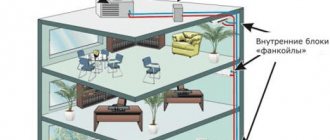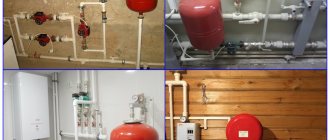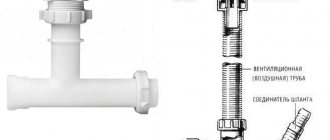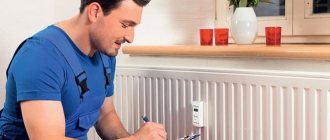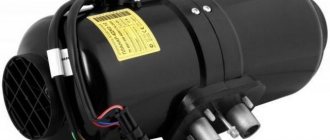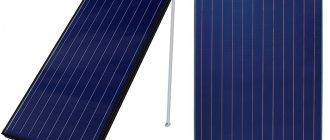Submit a request for installation This is a labor-intensive process that requires a competent approach and the presence of qualified specialists on site. This equipment is used mainly at large facilities with a large number of premises.
Chiller-fan coil systems are the optimal solution for ventilation, cooling and heating of air in large centers, which include several separate zones (hotels, hotels, office centers, etc.). In this case, the chiller can be placed both on the roof of the building and near the building, at zero level or in a refrigeration center, inside the building, and separate fan coil units are installed in each room.
The key to successful operation of the system is its correct installation. Our specialists will professionally install fan coil units of any type and, if necessary, organize annual scheduled maintenance of the entire system.
Fan coil installation stages
Regardless of the type of construction, installation of fan coil units is carried out according to the following scheme:
- Choosing a location for installation;
- Securing the fan coil unit using anchors;
- Installation of the piping unit (includes measuring equipment, taps, three-way valve);
- Installation of a pipeline supplying coolant;
- Thermal insulation of the pipeline;
- Formation of a system for condensate drainage: the drainage pipeline must be installed at a slope so that the liquid does not stagnate;
- Providing power to the device;
- Checking the tightness of the entire system (pressure testing), if leaks are detected, they are eliminated and re-checked;
- Test run with water or ethylene glycol;
- Testing and demonstration of equipment operation in the presence of the customer.
Characteristics
The equipment may have the following parameters:
- Productivity - up to 9000 kW;
- Cooling method - water and air;
- Condenser - remote or built-in;
- The contents of the pipes are water, ethylene glycol, antifreeze liquids (with a glycol base).
Good to know: installing fan coil units sometimes involves installing electric heaters in the system. They increase the air temperature.
Manufacturing stages
Before we start designing the network, we need to consider the building parameters. To do this, the manager will come to the site, collect documents with construction plans and save its data. Next, the manufacturing procedure will begin, consisting of three stages:
- Creation of technical specifications, including the production of visualizations;
- Familiarization with the documentation compiled by the surveyor;
- Carrying out heat dissipation calculations for each room;
- Selection of equipment and its characteristics;
- Calculation of the hydraulic system, selection of pumps, boilers and other auxiliary elements;
- Creation of design documentation, including diagrams, specifications and instructions for installers;
- Coordination of the plan with government agencies. Sometimes authorities impose supervision.
Fan coil installation
First, the chiller is often installed. It involves the execution of 6 stages:
- Raising the frame;
- Block placement;
- Laying waterproofing;
- Connecting equipment to the network;
- Examination;
- Launch (test mode).
Installation of fan coil units consists of 7 steps:
- Placement of indoor units;
- Installation of strapping;
- Thermal insulation gasket;
- Manufacturing of drainage system;
- Connection to the power supply network;
- Leak testing;
- Launch (test mode).
In some buildings, our specialists will need to make holes in the walls for laying pipes. We have everything we need for this. However, we strongly encourage customers to seek assistance prior to undergoing major repairs. It’s okay if you order service afterwards - the team will do their job cleanly and without damaging the finish. We have a lot of experience in this.
Installation of cassette fan coils
Cassette fan coil units are installed if there is an Armstrong-type suspended false ceiling in the room. Thus, a hidden installation option is used, in which the main part of the equipment is located behind the suspended ceiling. Only the decorative panel remains visible, the size of which coincides with the size of the ceiling elements. In large premises (hypermarkets, etc.) open placement is used, in which the fan coil unit is located directly on the ceiling.
Installation includes the following steps:
- Suspending the fan coil unit from the ceiling using four anchors and studs;
- Connection to the chiller and heating system (if not only cooling, but also heating is required)
- Installation and thermal insulation of pipelines;
- Installation of drainage pipelines and pump;
- Connecting a three-way valve and piping unit;
- Crimping and test run.
Features of installation of chillers and fan coils
Accurate hydraulic calculation. The diameters of the pipelines must be correctly selected: the diameters of the mains differ from the diameters of the pipeline connections (often increasing).
Calculation of load on supporting structures. The average weight of chillers is about 4-5 tons. The designed frames and foundations must include measures to reduce noise and vibration from chillers.
During operation of the cooling unit and pumping station, increased vibration is created, which can be transmitted through piping to the premises where the fan coil units are located. High-quality installation of the chiller is carried out with the mandatory use of shock-absorbing gaskets. When installing fan coil units, it is necessary to take measures to reduce vibration through the ceiling mounts.
Chillers have a high starting current - the power supply system must be calculated and designed.
The use of shut-off valves so that, if necessary, it is possible to dismantle the fan coils by minimally draining the system.
Calculation of the drainage system. The slope of the drainage is carried out with a slope of at least 1 cm per meter. Drainage pumps are installed at a maximum height, which is determined by the operating point of the pump. Thus, drainage flows by gravity.
During installation, many parameters are taken into account, which are calculated before starting work. We have more than 15 years of experience in the design and installation of engineering systems in industrial and administrative buildings. High-quality design documentation is 50% of success when installing a chiller-fan coil system. After installation, commissioning work is carried out to demonstrate to the new owner that the system is ready for operation.
Installation of ducted fan coil units
Duct fan coil units are located under the ceiling and, if necessary, are equipped with additional air ducts to supply air to the room. The equipment can also be connected to a ventilation system to provide air exchange.
Several types of duct fan coil installation are possible:
- Open (directly on the ceiling);
- Closed horizontal (communications and equipment are hidden behind a suspended ceiling);
- Closed vertical (installation inside wall ceilings).
The choice of a specific option is determined by the characteristics of the room.
Advantages of cooperation with us
Our specialists will help you select a chiller-fan coil system for your premises and install it in accordance with the standards. We guarantee:
- Fast professional installation of structures of any type and any capacity;
- Additional connection of equipment to heating and ventilation systems;
- Thorough check of the system and debugging of its operation;
- Independent control of work performed;
- Own guarantee for installation services;
- Compliance with agreed deadlines;
- Affordable prices for services.
In addition to installation, we offer to conclude a contract for scheduled maintenance of the system, which includes:
- Checking operation in various modes;
- Cleaning air filters and drainage system;
- Trouble-shooting;
- Replacement of worn parts and consumables;
- Re-check the work.
If you need climate control equipment for an office center, hotel, hospital or even your own cottage, pay attention to the chiller-fan coil system. It will help you maintain the required temperature easily and at no extra cost. We will help you create the right microclimate.
What elements are used during installation
Usually 3 parts are installed. Look in more detail:
Fan coil installation:
These are indoor units mounted on walls and ceilings. Placed directly in the rooms. They contain fans that “push” air through the radiator. The latter is cooled or heated with water. Thanks to this, the desired temperature is achieved.
Chiller installation:
liquid cooling unit. It is similar to the KKB or other external element of the air conditioning system. The design consists of 4 parts:
- Capacitor;
- Compressor;
- Evaporator;
- Valves;
- Tanks;
- Pumps;
- Pallets;
- Heat exchanger.
In the latter, water or a special solution enters in its normal state. A line filled with freon runs next to the channel. It transfers the cold to the liquid, after which it is sent further into the building. The refrigerant returns to the compressor. As a result, it cannot enter the premises, which ensures a high level of environmental safety.
The air conditioner can be installed entirely or separately with a compressor. This saves space. It happens that it is more profitable to place all the equipment at one point. This detail is decided at the stage of inspection of the object. The client should not worry about this, since this fact does not greatly affect performance.
Installation of heating elements: this is an additional component of the chiller. The fact is that the latter is not only capable of cooling the flow, but also heating it. For these purposes, free-standing boilers or heat pumps are used. However, not every unit can simultaneously increase and decrease the temperature of the medium. The types will be described below.
Useful information: all our equipment is manufactured in standard market dimensions. You can easily find spare parts for it when repairs are needed. In addition, the equipment is manufactured by well-known companies, which will allow you to buy original parts.
Installation of a system control system: we also install control equipment. It is an electrical panel located in a utility room. It connects to fans, pumps and other parts. There will be buttons on the front door. Often during work, instead of individual units, we install one common unit to control all climate control equipment - air exchange, air conditioning, heating, humidification, etc. Sometimes steel cabinets are available for each type of equipment. But the control system itself is uniform. It is performed in 2 variations:
- Panels with buttons and dials - with it you switch various functions, change fan speed, heating, etc.;
- Screens - they are made with a touch surface, like a tablet, and regular buttons. In terms of functions, the device does not differ much from the previous version, but still provides a number of additional features. Watch the air temperature, as we will install sensors indoors. Just change it, and the system will adjust the characteristics itself. After completing the work, you will also be able to set a schedule for launching the climate network. This will allow you to turn off the equipment at night when you are at work and no one is at home. There are many options and they are all available to you. Discuss this issue with our manager.
Types of fan coil units
Units are installed that differ in the number of channels, the method of air exchange, and the location of the elements. Take a closer look:
Number of pipes
- Two - 2 pipes are connected to the heat exchanger. Through one of them, water flows inside, through the other it goes into the room. This system allows you to either increase the temperature of the contents or decrease it. This cannot be done at the same time. If you only need air conditioning, then choosing this option will be an excellent solution;
- Four is a more advanced network consisting of two heat exchangers. Each has two pipes. The first contains cold liquid, the second contains hot liquid. The system independently regulates the flow. Such equipment allows you to flexibly change the temperature by alternating flows.
Outside:
This means that the elements are installed indoors, outside the climate network. They are identical to the indoor units of air conditioners. Available in 3 variations:
- Cassette - usually made to fit the dimensions of office ceilings like "Armstrong". Dimensions vary from 600x600 mm to 1200x600 mm. Air preparation units are built-in. Since they are located at a high altitude, the flow dissipates evenly even over large areas;
- Wall-mounted ones are the most common type, used both indoors and at entrances. In the latter case, it is used to create air curtains. You might have seen them in stores and other public places;
- Floor-standing ones are a rarer variety. Often in demand in the industrial sector. The equipment is mounted directly in the lower part of the room.
Inside: There is only one species in this group. You can install duct-type fan coils, which will be placed directly in the ventilation shafts. This will allow you not to overload the room with unnecessary objects.
Chiller installation
Installation can be done using two methods. The first is when the indoor unit draws air from the room, changes its temperature and sends it back. This type of equipment uses recycling. However, this is not the most perfect method, since when heated, oxygen is inevitably burned out, and in addition, ventilation is not provided.
Considering the fact that supply ventilation is often installed in most commercial facilities, and even in the residential sector, the second type of device is popular. It involves installing a duct fan coil model. They are placed directly in the air exchange network and process the fresh flow. Thanks to this, a pre-prepared flow always flows inside.
Useful information: Avimos offers a large number of climate control equipment. From us you can order any air conditioning systems, as well as ventilation, equipped with modern filters and other components. Take a look at the corresponding section on the website.
For which objects can installation be ordered?
It makes sense to carry out all the work on large objects. In apartments, houses or small shops with an area of up to 300 sq. you can get by with a traditional split system, consisting of a block on the street and 3-4 internal elements. However, it cannot be placed in a larger area. In this case, the presented option will be the optimal choice. Typically, the following areas order products from us:
- Medical - a high level of efficiency of equipment for hospitals, sanatoriums and other institutions treating people;
- Residential - we work with owners of apartments, cottages, townhouses, dachas, mansions, estates, etc. It is possible to install equipment in an apartment building under construction;
- Business - owners of business centers and shopping and entertainment complexes are among our main clients. This section also includes banks, service stations and other buildings that gather dozens of workers under their roof;
- Production - the presented equipment is in great demand in workshops, various factories and other industrial facilities.
We also carry out installation in educational institutions, administrative buildings and any other places.
Good to know: chillers are also used to cool equipment. A good example is machines in a factory or workshop.
Chiller fan coil or VRF system
Let's start with the fact that you can purchase both options from us. You already understand what you will get by ordering installation of chillers. But VRF equipment is an analogue of split air conditioners, but significantly improved. It is designed for large spaces. It is a condenser unit located outdoors or in a separate room, as well as many internal units. The peculiarity is that instead of water, freon circulates here.
VRF systems are better in terms of performance - their installation is the most modern, but also the most expensive solution.
Pros and cons of installing chiller fan coils
Advantages:
- Low cost of equipment and its installation;
- Wide possibilities for system modernization;
- The minimum number of restrictions regarding the height of placement of devices and the length of the line;
Disadvantages of the chiller-fan coil system:
- Impressive electricity consumption;
- A complex design process that is not a problem for us;
- A large number of auxiliary elements of the system such as pumps and exchangers;
- Low accuracy of temperature control - it is carried out by turning off and on the supply of cold and hot water.
Pros and cons of installing VRF systems
Advantages:
- Energy efficiency is the highest on the market;
- Accuracy - temperature differences are only 0.5 degrees. No other technology today has lower indicators;
- Reliability - several compressors are connected. When one exits, no significant changes occur in a short period of time.
Minuses:
- Price - the cost of installing a fan coil unit is several times less. For VRF systems it is the highest on the market, since they are a relatively new product, which is the future;
- Modernization - the network has to be stopped when you want to add or remove its components;
- Dimensions - in the case of VRF complexes, the length of the route can reach up to 1 km, with a height of 100 m, but with cheaper condenser air conditioners, also used in large buildings (this is an average option in terms of price and characteristics), the parameter is reduced to 25 m. The technology presented on this page has no such restrictions.
At the moment, Avimos installs all existing types of climate systems. Consider implementing KKB. Take a look at the section with VRF systems on the website. If you find it difficult to make a decision, call or write to us. The manager will tell you in detail about the benefits. Since we stock all types of products, there is no need for us to try to sell you any specific item. Specialists will select the optimal one.
